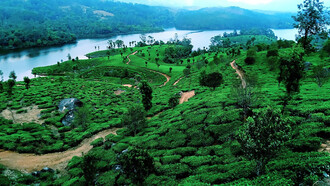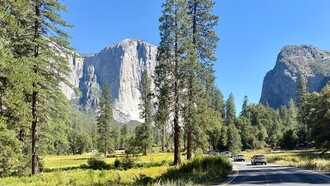The Raj era
During the British Raj, Bengal and more appropriately the city of Kolkata became the political hub of India. Much of Kolkata and Bengal’s most enduring developments took place between 1780 and 1820. Later in the 19th century, however, Bengal became a spark point in India’s Independence Struggle and this was the principal reason for the decision to transfer the capital to New Delhi in the year 1911. However, the loss of political power did not alter Kolkata’s economic control and the city continued to prosper until after World War II. Kolkata is the largest city in India and by now maybe ahead of London as the largest city in the British Commonwealth.
Cultural cauldron of India
Kolkata and much of Bengal is regarded as the cultural cauldron of India. The whole world knows about the great ‘Bengal Renaissance” of the nineteenth and early twentieth centuries which started with Raja Ram Mohan Roy (1775-1833) and ended with Noble Laureate Rabindranath Tagore (1861-1941).
Classical & laidback
As a city, Kolkata is irresistibly classical for visitors. Consider for instance the quintessential Kolkata tramcar that plies along the city’s many thoroughfares thereby adding to the old world charm of the place. The scene of a slow moving Tramcar slowly wending its way past the labyrinth of chaotic crowds and the walkways on both sides of the road occupied with improvised bookstalls assembled of wood, bamboo, corrugated tins and canvas is straight out of a pre-independent India of the British Raj.
Air of festivity
It is said that Kolkata would not be the same without its fairs and festivals. Zest and joy, a myriad of colors, pomp and splendor, pageantry, ancient traditions, classical gaiety, dignity, patriotism, solemnity, precious moments of festivity and leisure are what make Kolkata an unparalleled destination. All these and much more are infused into the lives of millions of Kolkatans and the fun-loving tourists from all over the world by a refreshing variety of celebrations each year. Each of the festivals is so different from each other, yet collectively they form an immeasurably important fabric of India’s symbolic culture often bringing together people from all age groups regardless of caste and creed.
The greatness, immensity and sheer diversity of India come to light in these festivals. For instance, during the grand Durga Puja festival of the Bengali community, the whole of Kolkata city comes alive with the Puja fervor with the Puja premises’ being decorated and illuminated by state-of-the-art electronic gadgets, innovative style of designing the idols, sound and light shows, etc… all of which goes to signify that India accepts modernity but in a way that is truly Indian, keeping in mind the 5000-year-old Indian heritage.
The future beckons
To herald the dawn of high-end tourism, the City-of-Joy has in place some of India’s outstanding hotels – hotels that exude opulence, grace and elegance. Be it the ITC Sonar Bangla, Hyatt Regency or Marriott. The city has truly arrived in the competitive uber-luxury tourism segment. What is more, the city’s hospitality landscape is evolving tremendously with Penthouse/Boutique hotel sector and entrepreneurs with dream projects showcasing their ingenuity to the discerning international visitors.
Kolkata has always had the tag of being a city of potholed streets and beggars. A native of Kolkata sums it up beautifully:
This is not to pretend that the suffering underbelly that Mother Teresa exposed was not real. Not at all. But there was another Kolkata as well — a city of coffeehouses and bookstores; a city of great political fervor and artistic ferment; a city with Swiss patisseries, Jewish bakeries and Bengali sweet shops; a city with its own triumphs and tribulations — and that city was lost in her overwhelming aura. Mother Teresa died while I was in America, but the Kolkata she left in the global imagination remained my cross to bear.
The transition from being a city of beggars to catering to the uber-luxury visitors hasn’t been easy. The city according to the Statesman journalist A. K. Ghosh:
Whether we call it Kolkata or Calcutta, the city still haunts every body’s mind. It remains a collage of multi-hued, multitextured events, an abode of eminent intellectuals.
From the flower sellers beside the ethereal Hooghly Bridge to the Edwardian town halls and the famous Silk Route of the mystical Eastern Himalayas, Bengal offers an eclectic mix of Nature-Culture-Adventure package, which is irresistible for the new age traveler.















